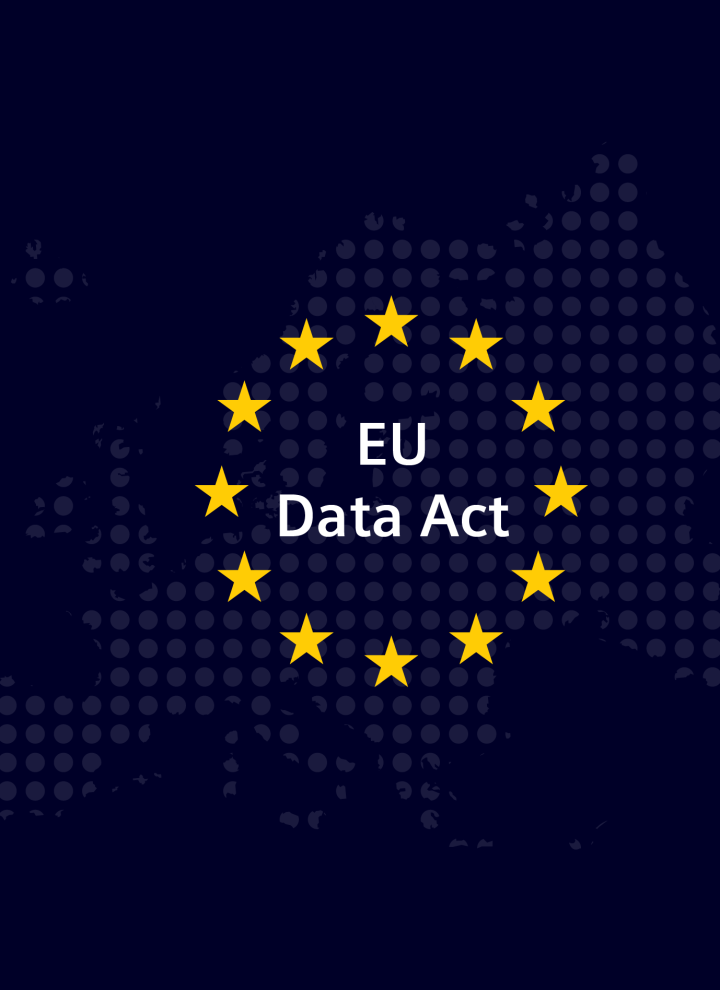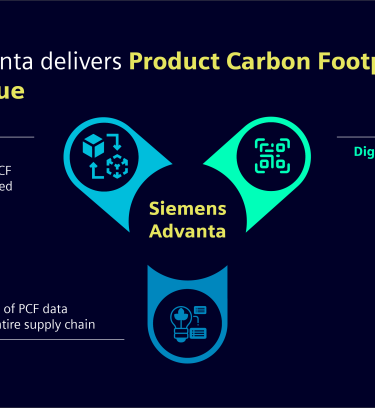Servitization: The Key to a Sustainable and Resilient Energy Future

Servitization: Key to a Sustainable Energy Future
This whitepaper, co-developed with Scovan Engineering Inc., is based on a real-world project that demonstrates the transformative impact of servitization in the energy sector.
Essential strategies for a greener and more resilient energy sector
The energy sector is changing, driven by the need for sustainable solutions, digital innovation, and new business models. To stay ahead, companies must rethink how they manage their assets, implement lifecycle strategies, and integrate service-based solutions that support energy and sustainability objectives.
How service-based models drive efficiency, innovation, and sustainability
As the energy sector transitions toward more sustainable and efficient operations, service-based models are becoming an essential approach. Servitization enables companies to move beyond traditional product sales, focusing instead on optimizing lifecycle management, improving resource efficiency, and integrating digital innovation. These models contribute to environmental and sustainability goals while fostering long-term operational resilience. At Siemens Advanta, we explore these developments and provide insights into how service-oriented strategies can enhance workforce engagement, support continuous improvement, and align with evolving industry expectations.
In our whitepaper, we explore:
- Sustainability & Lifecycle Thinking: Minimizing waste, extending asset lifespans, and aligning with sustainable development goals through life cycle assessment strategies.
- Digital Transformation & Innovation: Leveraging data-driven insights, predictive analytics, and automation for efficiency, including application lifecycle management software to optimize product lifecycle performance.
- Service-Based Business Models: Enhancing resilience, flexibility, and long-term value proposition value, supporting sustainability in business and the transition to sustainable products.
- Energy & Environmental Strategies: Reducing emissions, integrating renewables, and driving sustainable energy management through eco-friendly and environmentally friendly innovations.

Our industry leader

EcoDesign: Pioneering Sustainability in Product Development

EcoDesign: Pioneering Sustainability in Product Development
As businesses face increasing regulatory pressure and consumer demand for sustainability, EcoDesign emerges as a critical approach to minimize the environmental footprint of products and services. By embedding ecological considerations into the design phase, companies can not only ensure compliance but also drive innovation and gain competitive advantage.
What is EcoDesign?
EcoDesign refers to the integration of environmental considerations into the design and development of products and services. It emphasizes on the entire lifecycle – raw material extraction, production, usage, and disposal – aiming to reduce resource consumption, lower emissions, and enhance recyclability.
EcoDesign is essential for companies looking to align with sustainability goals and meet evolving regulatory requirements while addressing the growing consumer preference for eco-friendly products.
Why EcoDesign matters: key benefits
For organizations, adopting EcoDesign principles offers multiple advantages:
- Competitive advantage: Sustainable products open new market opportunities and enhance brand image
- Cost optimization: Lower resource consumption in production reduces operating costs
- Transparency: Improved engagement across the supply chain ensures better data quality on a product’s lifecycle, helping businesses make informed decisions
- Sales enablement: Many customers are willing to pay a premium for sustainable products
What is required?
The Ecodesign for Sustainable Products Regulation (ESPR), which took effect on 18 July 2024, plays a pivotal role in the European Commission’s efforts to promote environmentally sustainable and circular products. Building on the EU's 2020 Circular Economy Action Plan, this regulation aims to increase the circularity of material use and support the EU’s climate and energy efficiency objectives by 2030.
With the ESPR now in effect, manufacturers need to proactively redesign products to comply with these standards. Delaying action could result in non-compliance and missed opportunities to capitalize on the growing demand for sustainable products.
In addition to the ESPR, various regulations worldwide, such as the Chemical Substances Control Law and the Plastic Waste Management Rules, are driving organizations to redesign their products to mitigate use of hazardous substances and reduce plastic waste. Meanwhile, regulations like California's Title 20 and the Greenhouse and Energy Minimum Standards Act are establishing minimum efficiency requirements for energy and water use, reinforcing the global shift towards resource-efficient products.
Who does EcoDesign apply to?
EcoDesign principles apply to all industries, from electronics and automotive to healthcare and industrial equipment. Any product that interacts with natural resources or energy can be redesigned to reduce its environmental impact, making this approach highly adaptable across sectors.
How to implement EcoDesign?
Implementing EcoDesign involves several strategic steps:
- Set clear EcoDesign goals
Align your design efforts with sustainability objectives, whether it’s achieving carbon neutrality, fostering a circular economy, or reducing resource use
- Cross-functional collaboration
Like compliance strategies, EcoDesign demands a coordinated approach involving R&D, product management, supply chain, legal, and sustainability teams
- Life cycle assessment (LCA)
Conduct LCAs to evaluate environmental impacts at each stage of the product lifecycle and refine design criteria to minimize negative effects
- Pilot and scale-up
Start with a pilot project to test EcoDesign criteria within select business lines. Once successful, scale up EcoDesign principles across the organization
- Set KPIs and track progress
Establish relevant metrics to measure the success of EcoDesign initiatives, such as Product Carbon Footprint (PCF) and Environmental Product Declarations (EPD)
Overcoming challenges
EcoDesign implementation often faces hurdles, such as data availability and quality issues, stakeholder resistance, or difficulty in adapting current product development processes. However, these challenges can be mitigated through:
- Collaboration between legal and technology teams
- Transparent communication with all stakeholders
- Data-driven decisions based on thorough lifecycle analyses
EcoDesign as a business opportunity
Beyond compliance, EcoDesign presents a unique business opportunity. Companies can position themselves as sustainability leaders, create new revenue streams, and offer innovative solutions such as circular economy use cases. With growing consumer interest in green products, businesses that implement EcoDesign can gain a significant competitive edge.
How Siemens Advanta can help?
At Siemens Advanta, we can provide end-to-end support for companies looking to adopt EcoDesign principles. Our services include, but not limited to:
-
Developing customized EcoDesign frameworks and integrating them into Product Lifecycle Management (PLM)
-
Conducting life cycle assessments and producing Environmental Product Declarations (EPD)
-
Supporting the implementation and scaling up of EcoDesign across the organization
Our tailored approach helps clients navigate regulatory requirements while capturing business opportunities in the growing market for sustainable products.
If you want to learn more about our offerings regarding EcoDesign, please download the detailed presentation on the topic here:
Industry experts




Sustainability (services)

Sustainability
We support businesses across all verticals on their sustainability journey.
Shaping the future through sustainable innovation and operationalization
Sustainability is quintessential for our society, economy, and everyday life. Fighting climate change, protecting biodiversity, and transitioning to a circular economy are just a few examples of areas where society at large, customers, investors, and regulators are setting new standards for companies. At the same time, these areas also present firms with tremendous business opportunities. Those that champion sustainable innovation can leverage their technological advantage as a unique selling proposition.
Our mission is to help businesses become sustainability champions by setting the right targets, defining a successful strategy and transformation approach, and smooth operationalization, supported by data-driven insight generation.
Explore our tailored portfolio to support your business needs

Latest Sustainability insights
Our industry leaders



Compliance with EU Data Act

Compliance with EU Data Act
EU Data Act: Prepare for New Regulations
To foster the data economy in the European Union, EU legislators are currently reshaping business ground with new laws that shall enable fair and simple access to and use of data. The latest legislation: the EU Data Act, will become effective in September 2025.
With this deadline on the horizon, manufacturers of connected devices and others are required to act now. The timeline is tight, the obligations and requirements are ambiguous and fundamental business questions need to be clarified.
What is EU Data Act?
One important aspect of the EU Data Act is to grant users of connected products the right to access the generated machine data. In addition, the Data Act allows users to grant access to that data to third parties, which may be, for instance, independent service providers, AI startups and potentially also competitors.
Users and third parties may use the data for their own purposes, including providing third party service (as an alternative to manufacturer provided services) or analytics offers.
Manufacturers that fail to provide data access risk facing substantial financial penalties. The penalties shall be effective, proportionate and dissuasive and may have retroactive effect; if personal data is concerned, fines shall be according to the GDPR, which means the higher of EUR 20 million or 4% of the annual global revenue.
What is required and when?
Beside other obligations, manufacturers of connected products need to fulfill three key obligations by two deadlines.
- Information obligation
Starting from September 2025, manufacturers of connected products are required to inform users at point of sales about the data that the connected product generates during usage.
- Data sharing obligation
Starting from September 2025, the data holder (usually the manufacturer, if it chooses to collect the machine data) is required to share available data with the user of the connected product as well as with third parties authorized by the user.
- Design obligation
One year later, starting from September 2026, manufacturers must design new products in a way that the data is directly accessible to the user.
What do these obligations imply? Companies that sell connected products need to react now and start designing and implementing response strategies for sharing the relevant data. Yet, as is often the case, the details are where the real challenges lie.
Who does the law apply to?
The above-mentioned obligations under the EU Data Act apply to all manufacturers of connected products that make their products available in the EU, irrespective of their industry and place of establishment.
The right to access data is restricted to users within the EU. Third parties that were granted access by users must have a legal representation in the EU to be eligible for data access.
How can you become compliant?
The path to compliance is individual for each company, yet there are four key tips, from our experience, to make the journey a smoother one.
- Setting up a cross-functional team
Due to the complexity of this topic, different functions and experts from within the clients’ organization and from external need to be mobilized, including legal, government affairs, R&D, product management and IT. It is advised to involve all experts and concerned business units from day 1 to form a joint response strategy moving forward.
- 80/20 and risk-based approach
The Data Act applies not only to new products, but also to the existing installed base in many cases. Companies with a large variety of product families need to carefully plan their approach to balance the need of being compliant and the effort to implement.
- Close collaboration between legal and technology experts
Companies usually need to develop a new technical solution to fulfill the obligations under the Data Act. It is neither a pure technical nor an entire legal decision. Technical feasibility/effort and legal compliance risks need to be evaluated jointly to come up with an optimal solution. In addition, sales and customer service teams need to be involved as well to ensure a smooth customer experience.
- Treat this as a business opportunity rather than a pure compliance burden
Despite being a compliance topic from the first glance, the EU Data Act also provides vast opportunities for companies to capture. Creating new revenue streams of providing data, offering third party maintenance services for other companies’ products, or conducting AI analytics on competitors’ machine data, the opportunities seem endless.
How can Siemens Advanta help?
With our footprint in various industries and specifically our experience with the EU Data Act, we can support our clients on their way to become compliant with the obligations. Our project management services span from hands-on project management office support for urgent content issues, to developing comprehensive data strategies designed to meet future digital challenges. Siemens Advanta tailors its offerings and strategies to align with the unique needs and stages of development in areas, e.g. system architecture and data literacy, ensuring that our services are well-suited to each client's specific circumstances and objectives.
If you want to learn more about our offerings regarding the EU Data Act, please download the detailed presentation on the topic here:
Industry experts




Disclaimer
The information provided herein is for general informational and promotional purposes only and may not be accurate, complete or up to date. The information does not constitute any regulatory, legal, financial, technical or other professional advice.
No responsibility or liability will be accepted for any errors, omissions or inaccuracies in the content. Siemens Advanta disclaims, to the fullest extent permitted by applicable law, any and all liability or responsibility for the accuracy and completeness of the information contained herein and for any acts or omissions made based on such information. Siemens Advanta does not provide any legal, regulatory, audit, or tax advice; readers are responsible for obtaining such advice from their own legal counsel or other licensed professionals.
Healthcare of the Future

Healthcare of the Future
Enhancing patient care through smart, secure, and sustainable innovations
The healthcare industry stands on the precipice of a transformative era. Smart technologies, automation, and a focus on personalized care are reshaping how we deliver and experience medical services. This article explores these advancements while emphasizing the importance of cybersecurity and environmental sustainability in building a future-proof healthcare system.
Smart innovation use cases in the healthcare industry
The rise of smart technologies and infrastructure
Hospitals are transforming into interconnected ecosystems, where smart devices collect real-time patient data. Wearable technology allows for continuous health monitoring, while Internet of Things (IoT) sensors track vital signs within hospital rooms. This data empowers healthcare providers with a more holistic view of their patients' conditions, enabling proactive interventions and improved decision-making. Additionally, smart infrastructure promises optimized resource allocation, leading to reduced wait times and improved operational efficiency.
Robotic surgeries: advancing precision
Robotic surgery systems are gaining traction, offering minimally invasive procedures with superior dexterity and magnified visualization. These systems allow surgeons to operate through smaller incisions, leading to faster recovery times, reduced pain, and improved cosmetic outcomes for patients.
Automation for efficiency and precision
Repetitive tasks like medication administration and data entry are increasingly being automated. Robotic surgery systems offer minimally invasive procedures with enhanced precision and faster recovery times. Automation not only frees up healthcare professionals for more complex tasks but also minimizes human error, leading to improved patient outcomes.
Personalized medical records: A patient-centric approach
The future of medical records lies in personalization. By leveraging Artificial Intelligence (AI) and Machine Learning (ML), these records will evolve into comprehensive health profiles. These profiles will integrate data from various sources, including wearable technology, genetic information, and past medical history. This allows for tailored treatment plans and preventive care strategies, empowering patients to actively participate in their own health management.
Unveiling hidden patterns for enhanced patient experience
Artificial Intelligence (AI) and Machine Learning (ML) are poised to revolutionize healthcare by providing valuable insights from vast datasets. These technologies can analyze complex medical information to identify patterns and trends that may escape the human eye. This empowers healthcare professionals with data-driven insights for diagnosis, treatment selection, and personalized care planning.
Home care revolution: convenience and accessibility
Advancements in technology are making it possible for patients to receive high-quality care in the comfort of their homes. Telemedicine consultations allow remote patient monitoring and virtual doctor visits. Additionally, remote patient monitoring systems provide continuous health data to healthcare providers, enabling timely intervention when needed. This shift to home care empowers patients to manage their chronic conditions more effectively while reducing strain on hospital resources.
The future of healthcare prioritizes a seamless and positive patient experience. Mobile applications will streamline appointment scheduling, medication reminders, and access to medical records. Additionally, AI-powered chatbots will offer 24/7 support and answer patient queries, enhancing the overall patient journey. These innovations, along with telemedicine, patient analytics, and continuous health monitoring, improve patient care and operational efficiency. The future of healthcare is centered on delivering a positive patient experience and ensuring sustainable and efficient applications in the industry.
Security as a strategic imperative in healthcare
With increased trust in evolving technologies like AI and IoT, the healthcare industry has seen significant benefits but also faces serious risks, such as cyberattacks. Protecting patient data is crucial, as breaches can lead to identity theft or the sale of data on the black market. These malicious attacks can also cripple hospital operations, causing delays in patient treatment. As a result, implementing robust cybersecurity measures, including regular incident response plans and forensic analysis, is essential. This approach ensures patient data remains secure and healthcare operations run smoothly.
Sustainability: A green future for healthcare
Sustainability is becoming a core pillar in healthcare delivery. Hospitals are adopting energy-efficient technologies and implementing water conservation measures. Additionally, waste management practices are being optimized to reduce environmental impact. By embracing innovative technologies, prioritizing patient-centric care, and fostering a secure and sustainable environment, the healthcare industry is poised to usher in a new era of wellness and well-being. This future holds immense potential for enhancing patient care, improving healthcare delivery, and creating a healthier planet for all.
A virtuous cycle that benefits both patients and healthcare providers
The three pillars of smart, secure, and sustainable healthcare work in concert to create a virtuous cycle that benefits both patients and healthcare providers. Smart technologies like AI-powered diagnostics and remote monitoring allow for earlier interventions and more targeted treatment plans, leading to improved patient outcomes. Additionally, automation streamlines administrative tasks and reduces human error, freeing up medical professionals to devote more time to individual patient care. This personalized approach fosters a more positive patient experience, building trust and satisfaction.
Furthermore, the secure pillar safeguards this progress. Robust cybersecurity measures protect sensitive patient data from breaches, ensuring patient privacy and preventing disruptions to critical healthcare operations. This translates to reduced costs associated with data breaches and cyberattacks, allowing healthcare institutions to allocate resources more effectively towards patient care and innovation.
Finally, the sustainable pillar tackles environmental concerns and cost reduction simultaneously. By adopting energy-efficient technologies and waste management practices, healthcare institutions can minimize their environmental footprint while lowering operational expenses. These cost savings can then be redirected towards enhancing patient care and acquiring the latest advancements in medical technology. This holistic approach ensures a future where smart, secure, and sustainable healthcare empowers both patients and providers.
Connect with us if you’re interested in learning more or sharing your insights about the future of healthcare.
Industry experts



Vehicle-to-Grid

Leveraging Vehicle-to-Grid Technology with Electric Vehicles as Energy Storages
How e-mobility can contribute to future energy supply
What is Vehicle-To-Grid (V2G) and what are the benefits?
The energy crises and the shift away from fossil fuels have sparked an unprecedented boom in renewable energy in Europe. However, the volatility of wind and solar power also presents new challenges for our fragile power grid. To ensure a stable energy supply and achieve climate targets, an intelligent “smart” power grid is needed. This requires a significant amount of flexible energy storage capacities which will continue to rise. This is where Vehicle-to-Grid (V2G) technology with bidirectional charging emerges as a practical solution to ease the strain on our grids.
V2G technology enables EVs to both charge and feed surplus energy into the grid. Electric car batteries are thereby used as mobile power plants and energy storage units. Based on this, bidirectional power flow can support grid stability. For V2G, many different key players from the energy and automotive market need to be involved. At the same time, technology is opening new opportunities for both companies and end-users. With Vehicle-to-Building (V2B), several electric vehicles support the energy supply of large buildings covering peak loads. Vehicle-to-Home (V2H) uses the EV for local energy storage – mainly for temporarily storing electricity that has been produced at home.
How can the power grid benefit from Vehicle-to-Grid (V2G)?
With the concept of Vehicle-to-Grid (V2G) Balancing power the electric vehicle batteries function as a virtual mega power station absorbing energy bottlenecks to stabilize the grid and mitigate potential power outages. Every single vehicle can contribute to ensure grid stability. Even if only 10-20% of every electric vehicle battery capacity is used for V2G, the storage capacity grows with the number of electric vehicles integrated into the grid swarm. Less stationary energy storage is needed for a successful transition to renewable energy.
Next to V2G Balancing power, Unidirectional Smart Charging (V1G) can have additional impact to ensure grid stability. Here, stabilization is achieved without any bidirectional charging technology by halting battery charging when negative control power occurs.
How can companies benefit from Vehicle-to-Everything (V2X)?
Companies require a stable energy supply. Especially for production environments, an uninterrupted power supply is essential.
On top, companies can use bidirectional charging technology based on the Vehicle-to-Building (V2B) Demand charge management: Electric vehicles can be used as decentralized energy storage systems for supplying energy to buildings. Leveraging EV batteries to handle spikes in energy demand within buildings, such as factories, leads to optimized operations, thereby increasing productivity and minimizing instances of unexpected downtime. In particular, companies with larger fleets have a great potential to integrate electric vehicles into an intelligent energy management system.
Beneficial use cases for end customers
End consumers can also reap the benefits of the Vehicle-to-Grid (V2G) ecosystem. By agreeing to provide a portion of their electric vehicle's battery capacity to ensure grid stability through V2G Balancing Power, they become eligible for financial compensation. This means that they will be rewarded for their contribution, making it a win-win situation for both the consumers and the grid.
With the majority of vehicles being parked for extended periods, end customers have an additional opportunity to benefit from V2G Arbitrage. This concept allows batteries to be charged at the most cost-effective electricity rates. When energy is required, these batteries can serve as a power source by providing a portion of their stored capacity. This dynamic is made possible by the increasing availability of flexible electricity tariffs, which are being introduced more frequently. As a result, end customers can take advantage of these emerging options to optimize their energy consumption and save on costs.
In addition to V2G, end customers can also take advantage of vehicle-to-home (V2H) technology to optimize their own energy consumption. With a local photovoltaic system, solar energy can be stored directly in the vehicle's battery and utilized as needed. This eliminates the need for a separate local energy storage system, simplifying the setup for customers.
Overcoming barriers when implementing Vehicle-To-Grid (V2G) technology
Unlocking the full potential of Vehicle-to-Grid (V2G) technology requires careful consideration of various factors. While it offers numerous advantages, there are also several challenges that need to be addressed to successfully implement it:
- Regulations: Varying grid codes and regulations across regions are challenges for a smooth implementation of V2G use cases.
- Technology: Frequent additional cyclings of the EV battery for V2G use cases can accelerate battery degradation. This seems to be rather a minor factor, but proper communication with customers is necessary to reduce concerns.
- Relevance for customers: The attractiveness of use cases is a major challenge for the success of V2G. Customers need to be aware of the potential of these new opportunities and a clear benefit for customers is needed for each use case.
Key factors for success in Vehicle-To-Grid (V2G)
Business Model
V2G offers several possible use cases. Deciding on the most relevant use cases and a solid business model is the key to success.
Business Case
Based on the defined business model, monetization options need to be evaluated and a business case needs to be defined.
Go-to-market strategy
The formulation of a go-to-market strategy is important to successfully launch V2G use cases.
Partner network
V2G offers great potential. On the other hand, the complexity of the topic requires a strong network of partners (e.g. energy providers).
Technical setup & regulations
The European energy market is highly regulated. V2G technology needs to be developed considering all relevant regulations on the European and national levels.
Embracing the future for Vehicle-To-Grid (V2G) technology
Vehicle-to-Grid (V2G) technology is quickly gaining traction in the automotive and energy sectors, offering a promising solution for energy transmission and grid stability. While several framework conditions need to be addressed to fully unlock its potential, now is the time to leverage V2G in less complex use cases. Major OEMs have already started pilot projects, and we anticipate increasing market dynamics in the coming months. The future of V2G looks bright, with significant benefits for OEMs, suppliers, and end customers, playing a crucial role in shaping the future of energy and automotive industries.
Industry experts


13 Aspects of Sustainable Healthcare

13 Aspects of Sustainable Healthcare
13 critical factors to be considered for a sustainable healthcare system
Healthcare stands as one of the most critical sectors worldwide, yet hundreds of millions of people still lack access to essential health services. Sub-Saharan Africa and Southern Asia, in particular, face significant challenges in this respect. High healthcare expenses often deter individuals from seeking help for serious and chronic diseases. Nevertheless, investing in the healthcare industry to develop human capital is crucial for sustainable economic growth.
Establishing a robust health financing system is paramount for individuals grappling with financial constraints. This effort should be coupled with enhancements in healthcare infrastructure and workforce development, including medical professionals, to ensure the delivery of essential health services accessible to all.
Health challenges persist due to unavoidable factors such as disasters, mass migration, conflicts, climate change, global pandemics, and pollution. Additionally, unhealthy lifestyles, habits, and aging populations further compound these challenges. Both public and private health organizations are addressing these issues and underscoring the importance of implementing sustainable mechanisms that facilitate real-time feedback.
Building a healthcare system founded on sustainability not only ensures access to quality healthcare but also minimizes environmental damage and contributes to overall well-being.
Sustainable healthcare encompasses a multitude of facets, spanning from prevention to the delivery of care, and involves numerous stakeholders, including patients, healthcare providers, pharmaceutical companies, and policymakers. Here, we outline thirteen critical aspects of sustainable healthcare that must be considered and improved to ensure sustainable global health:
1. Preventive Care
This is a foundational aspect of sustainable healthcare. Efforts should be directed towards preventing diseases and promoting healthy lifestyles, as this is more cost-effective and results in better health outcomes. In smaller populations, effective methods to inform and change behavior can be successfully studied, as demonstrated in Iceland. Over two decades, a program tailored for adolescents reduced the percentage of 15-16-year-olds drinking alcohol from 42% to 5%, and smoking from 23% to 3%.
The biggest impacts on preventive health measures are well-known. Factors such as excessive consumption of unhealthy food (e.g., processed food with high sugar, fat, and salt), lack of exercise, smoking, and alcohol are the main causes of "civilization diseases" like heart attacks, strokes, diabetes, and lung cancer, which pose significant costs to society and individuals. No treatment will ever be as sustainable as prevention. Education and technology will be crucial to support the necessary behavioral changes.
The challenge is urgent. For example, the global population with diabetes is expected to rise by 51%, from 463 million people (9.3%) to 700 million (10.9%) by 2045, primarily in cities and richer countries. We need more pilot projects to improve people's health behavior and better global best practice sharing about what works and what doesn't.
2. Accessible Care
Healthcare should be universally accessible, ensuring that no one is left behind. This includes providing care to the most vulnerable populations and those living in remote or underserved areas. From a population health perspective, low-level primary care is much more important than high-end specialized treatment for improving overall life expectancy. Many diseases can be effectively treated with low-cost medications, such as those for high blood pressure. Therefore, it is crucial to have accessible primary care to detect and treat many common health problems. Technology, such as AI, sensors, and tests, will be a great help in lowering costs and making care more accessible.
3. Affordable Care
Cost is a major barrier to healthcare for many people. Sustainable healthcare should be affordable to all, irrespective of their economic condition. With scientific progress, more diseases will become treatable and even curable, leading to rising costs, no matter how well-designed the health system might be. The challenge remains to make the “biggest bang for the buck,” i.e., to implement metrics for rational decisions on where to allocate scarce resources best. New treatments are always more expensive, and sufficient funding is needed for pharmaceutical companies to invest in further research. Often, this means a trade-off between rising costs in the short run and potentially better treatments in the long run, which will become affordable after patent expiration. The way of the “blockbuster” drugs shows that they make pharma companies wealthy for a while and then lead to cheap generics that can improve healthcare for all in need. In some cases, such as new genetic treatments that might cure diseases like sickle cell, the costs may be high in the short run yet offer great promises in the long term. A combination of governmental policies and competitive elements delivers the best results, clearly showing that free trade alone cannot be successfully applied to healthcare.
4. Quality of Care
Alongside accessibility and affordability, maintaining high standards of care is essential. Quality of care encompasses effective, safe, and people-centered services. Implementing clinical practice guidelines and protocols, quality improvement initiatives, and patient safety programs is crucial. The biggest impact will come from applying principles of evidence-based medicine. To gather more "real-world evidence," data from various sources such as patient feedback, behavior, sensors, tests, and genetic information need to be used. The challenge is to determine what works best, rather than relying on biased tradition or experience. Quality has two aspects: how the treatment is perceived by the patient (patient experience) and how well it works from an evidence-based, statistical, and economic viewpoint. Both aspects must be developed further, and technology will be crucial. AI will not replace physicians, but few will work in the future without its support to make the best possible treatment decisions.
5. Healthcare Workforce
Investment in a skilled, motivated, and well-distributed healthcare workforce is crucial. This includes doctors, nurses, and other healthcare professionals. One of the key challenges is that work in healthcare is often harder and less well-paid than in other fields. There is a lack of healthcare personnel in most countries, largely due to the lower attractiveness of day-to-day work. While working in healthcare has a high reputation, employee satisfaction is often far from sustainable levels. There are many aspects to address this issue—often, what people want is a better work-life balance rather than having to make sacrifices that seem inevitable, such as working more than 50 hours per week, as 50% of US doctors do. AI, telemedicine, process improvements, and better working schemes are urgently needed to reduce the non-patient-related work, which comprises the biggest part of the daily schedule.
6. Technology and Innovation
The use of digital technologies, AI, and data analytics can improve diagnostics, disease management, patient monitoring, and supply chain management. Using Artificial Intelligence (AI) for precision medicine, Big Data for epidemiological studies, or Internet of Things (IoT) devices for remote patient monitoring are just some examples of how technology will make healthcare more efficient and, thus, more sustainable.
7. Pharmaceuticals and Medtech
Access to essential medicines, vaccines, and medical technologies is a key aspect of sustainable healthcare. Collaboration with pharmaceutical companies and medtech industries is important in this context. Emphasizing on Research & Development (R&D) for neglected diseases, ensuring the availability of Essential Medicines as per the WHO list, and encouraging innovation through technology transfer agreements or Public-Private Partnerships (PPP) are key aspects to support sustainability from a global health perspective. The recent initiative of the German biotech company BioNTech to provide local vaccine production "BioNTainers" to Rwanda is a lighthouse example of supporting underserved areas with vaccines.
8. Healthcare Infrastructure
Infrastructure such as hospitals, clinics, and labs should be evenly distributed, well-equipped, and efficiently managed. This also includes robust telemedicine capabilities. Building Health Information Systems (HIS) or Electronic Health Record (EHR) systems, optimizing healthcare logistics through Supply Chain Management (SCM) solutions, and creating smart hospitals are essential. As hospitals are the most resource-intensive treatment options, home or local care options, cooperating in a network with specialized clinics, are the preferred pathways. Hospitals will rely on energy efficiency with better-monitored infrastructure technology, focusing especially on heating and cooling, security, and flexibility, as well as optimized information delivery and monitoring from a cockpit perspective tailored to each user role, from hospital managers and doctors to patients and technical staff.
9. Environmental Sustainability
The healthcare sector itself should reduce its environmental footprint. This includes sustainable procurement, waste management, energy use, and supply chain practices. Implementing Green Health initiatives, reducing carbon emissions in line with the UN Sustainable Development Goals (SDGs), and using Life Cycle Assessment (LCA) to evaluate the environmental impact of healthcare products and services are important.
10. Healthcare Financing
Efficient, equitable, and sustainable financing mechanisms are needed to fund healthcare services. This could involve various strategies like public-private partnerships, insurance schemes, or innovative funding models. Instituting mechanisms such as Performance-Based Financing (PBF), or innovative funding models like Social Impact Bonds (SIBs), long-term value partnerships, or blended finance mechanisms are important. Exploring health insurance models, such as community-based health insurance, and decentralization schemes as seen with the NHS or the Danish model, to build new “superhospitals” can be a way forward.
11. Integrated Care
An integrated, patient-centered approach that coordinates care across different levels and providers can significantly improve outcomes and efficiency. Developing coordinated care models such as Accountable Care Organizations (ACOs) or Patient-Centered Medical Homes (PCMH) can be instrumental in implementing care pathways and transition-of-care models for chronic conditions.
12. Health Literacy
Educating individuals and communities about health and healthcare can empower them to take charge of their own health and make informed decisions. Implementing health education programs that apply principles of the Health Belief Model (HBM) or Theory of Planned Behavior (TPB) is essential. Promoting digital health literacy in the age of eHealth and mHealth can be effectively achieved by utilizing the possibilities of digital interactions and AI.
13. Policy and Governance
Good governance, robust policy frameworks, and strong regulatory systems are crucial for ensuring all other aspects of sustainable healthcare. Ensuring policy coherence through Health in All Policies (HiAP) approach, and enforcing strong regulatory systems such as Good Manufacturing Practices (GMP) in pharmaceuticals or Quality Management Systems (QMS) in healthcare organizations are essential. Key aspects of sustainable health will be driven and influenced by governmental bodies e.g. on an European level (e.g. European Green Deal), US, Chinese or Indian level, influencing smaller countries and fundamentally improving health for their citizens.
Based on these aspects, it is evident that building and maintaining sustainable healthcare systems is necessary for addressing global health challenges effectively. From preventive care and accessible services to technological innovations and environmental sustainability, there are various challenges to face along the way.
Adapting new technologies and digital solutions in the healthcare industry will surely make our lives more efficient and reduce wasted time and resources, resulting in better healthcare systems. Efficient and equitable healthcare financing mechanisms, coupled with strong policy frameworks and governance structures, are fundamental for sustaining healthcare systems in the long term and ensuring that they remain resilient in the face of evolving health challenges.
The path towards sustainable healthcare demands collective commitment and strategic action. By prioritizing prevention, accessibility, and innovation, we can build resilient systems that promote health equity and environmental stewardship for future generations.
Industry experts



Con Edison

Deploying IOT across an Enterprise
Con Edison uses advanced technology to enhance data accuracy, billing, line management, and safety, while offering real-time usage monitoring for cost savings and environmental benefits.
Con Edison as one of the nation’s largest utilities sought to increase visibility into data across its ecosystem.
Implemented a range of innovative solutions to address these challenges using IoT and advanced technologies, with Siemens' support.
- Advanced Meter Data Management (MDM)
- Customer Information System (CIS) Transformation
- High Pressure Fluid Filled (HPFF) Transmission Line
- Manhole Monitoring Program
Advanced technology improves data, interfaces, safety, and electricity monitoring for cost and environmental benefits. ConEdison's grid investment builds resilience and advances electrification, leading IoT modernization of infrastructure.
- Operations and worker safety
- Cost savings and environmental benefits
- Customer visibility
Con Edison's complex power system aims to benefit its value chain through digitalization, from safety to customer interface. Siemens Advanta has been a crucial partner, providing tailored solutions and custom pilot programs.
Meter Data Management (MDM)
ConEdison’s Meter Data Management System (MDMS) provides accurate billing of complex tariffs, greater operational efficiencies, and has improved service to ConEdison customers. Leveraging Siemens' Gridscale X Meter Data Management software, ConEdison is one of the first energy providers in the United States capable of recording and processing electric power meter data in near real-time, providing faster identification and response times for outages and critical safety alerts, including natural gas detection alerts.

Unlock the full potential of your smart meter data
Gridscale X Meter Data Management (formerly EnergyIP® MDM) accelerates utilities' digital transformation, extending meter data management beyond meter-to-cash. It's open, interoperable, and scalable, helping utilities understand data, forecast accurately, and operate efficiently.
Customer Information System (CIS)
As part of the MDMS work, Siemens Advanta supported the migration of ConEdison’s legacy customer system to an advanced CIS system. The project provided a single, unified solution that supports billing capabilities and customer care operations.
High Pressure Fluid Filled (HPFF) Transmissions
In this pilot program, Siemens Advanta provided ConEdison with a data driven solution to help detect leaks earlier and more accurately than the current methodology. The custom AI model, developed specifically for ConEdison, is a first of its kind utility leak detection approach. Leveraging data from past leaks to train the AI model, the system provided ConEdison with timely insight that a leak occurred.
Manhole Monitoring Program
ConEdison recently completed a pilot program supporting its Underground Distribution System assets. Specifically, the effort was a collaboration to enhance safety to the public walking the streets of NYC, where there are ~ 280,000 manholes, reducing the number of false positive alarms, improving safety, and reducing costs.
Consolidated Edison, Inc., one of the largest US energy companies, has digitalized its operations using open-source cloud technology to enhance data, customer interfaces, line management, and safety. This technology improves operations and transforms electricity usage monitoring for cost and environmental benefits. ConEdison's grid investment builds climate resilience and advances electrification, positioning it as a leader in IoT infrastructure modernization.
Dive deeper: Related content
Our industry leaders



Explore more about Siemens collaboration with Con Edison
Discover moreProduct Carbon Footprint

Product Carbon Footprint
Driving sustainability and reducing the environmental impact
In today's dynamic business landscape, sustainability has become a strategic imperative. Companies are under growing pressure to reduce and measure their product carbon footprint, meeting both regulatory mandates (e.g. EU taxonomy, corporate sustainability reporting directive) and the rising expectations of environmentally conscious consumers. This involves embracing sustainable practices, eco-friendly sourcing, and transparent reporting on their products’ carbon footprints.
A Product Carbon Footprint (PCF) is the result of measuring, managing, and communicating greenhouse gas emissions related to a product’s life cycle. The methodology used for calculating carbon footprints are life cycle assessments which analyze a product’s impact on climate change by analyzing CO2 emissions and CO2 emission equivalents (CO2e) over all life cycle stages.
(DIN EN ISO 14067 | Carbon footprint of product)
Challenges & complexity
Calculating the product carbon footprint for manufacturing companies can be a complex task, and several challenges are commonly encountered in the process. Some of the most common challenges include:
- Data collection, availability, and quality
Manufacturers may face outdated or incomplete data on raw materials, energy consumption, and other relevant factors. The absence of standardized formats further impedes comparability of carbon footprint calculations. -
Supply chain complexity
Global supply chains with multiple tiers of suppliers pose challenges in tracing material origins and accurately quantifying environmental impact. -
Scope 3 emissions
Scope 3 emissions encompass upstream and downstream emissions, contributing up to 90% of a product's CO2 value. However, companies often lack control over these emissions given their complex supply chains, making it challenging to include them in the calculation. -
Technology and methodology:
Selecting suitable tools and methodologies for carbon footprint calculations proves challenging, as different approaches can yield varying results. Staying updated on all evolving measurement standards, methodologies, and new technologies requires continuous effort. -
Regulatory compliance & reporting:
Meeting varying regional regulations and reporting standards further complicates carbon footprint calculations.
Leverage Siemens' state-of-the-art PCF solutions
Siemens’ PCF ecosystem addresses the challenges of product-level carbon footprint calculations. Leveraging state-of-the-art technologies, we offer comprehensive solutions that go beyond compliance, fostering strategic sustainability positioning, and targeted PCF optimization along the entire value chain.
With its unparalleled expertise and industry-based approach, Siemens is the sole provider that possesses the domain know-how needed to tackle this pressing environmental challenge. By leveraging three PCF building blocks, empowered by Siemens-specific software tools and Siemens Advanta’s holistic consulting offering, we are driving the transformation towards a greener and more sustainable future.
Block 1: PCF Calculation – GreenDigitalTwin GDT (limited access)
Siemens’ GreenDigitalTwin (GDT) software is a powerful tool for businesses, offering accurate PCF calculations and a holistic understanding of environmental impact over the entire product lifecycle. Beyond PCF, Siemens' GDT enables comprehensive Life Cycle Assessments (LCAs) and the creation of Environmental Product Declarations (EPDs). Siemens' GreenDigitalTwin GDT is recognized as best-in-class, providing the necessary tools for informed decision-making and guiding companies towards sustainability goals by minimizing their carbon footprint.
Block 2: PCF aggregation along the supply chain – SiGREEN
At Siemens, we understand that true sustainability cannot be achieved in isolation. That is why Siemens developed SiGREEN, a software designed to securely aggregate emission data along the entire supply chain to generate dynamic PCFs based on true values. This means businesses can now gain insights into the environmental impact of their product lifecycle, including raw materials, manufacturing processes, transportation, and more. By visualizing the supply chain's carbon footprint, SiGREEN facilitates smarter decision-making and fosters collaboration between all stakeholders, driving the adoption of more sustainable practices across the board.
Block 3: PCF Governance – DigitalProductPass DPP
The final building block of Siemens’ PCF management approach is the DigitalProductPass DPP software. This innovative tool supports businesses in implementing a robust governance framework to ensure PCF compliance and transparency. The DigitalProductPass DPP enables companies not only to track, validate, and certify the PCF of their products, but it will also be a bullet-prove basis for future requirements like PCF-based taxation or the upcoming EU regulation.
Solutions: Driving sustainability through holistic Product Carbon Footprints
Siemens Advanta leads the way with cutting-edge solutions for product carbon footprints offering comprehensive consulting expertise. We empower businesses to quantify and manage their environmental impact and are your enabler for achieving PCF transparency and offers a wide range of tailored solutions:
Regulatory compliance guidance
Navigate environmental regulations with Siemens Advanta’s expertise, ensuring compliance and readiness for future standards. Furthermore, Siemens Advanta assists you in achieving official certifications for your PCFs, further increasing trust and transparency towards customers.
Carbon footprint capability
Empower clients to independently calculate product carbon footprints by providing and integrating state-of-the-art tools as well as providing comprehensive training.
Siemens Advanta provides you with the capabilities to accurately calculate your products’ carbon footprints.
Customized carbon reduction strategies
Develop tailored strategies to optimize supply chains, processes, reduce energy consumption, and minimize waste, surpassing compliance standards. Siemens Advanta is experienced in successfully leading decarbonization projects covering scope 1-3 emissions.
Green lean digital factory
Boost productivity, flexibility, and sustainability in production facilities. Our approach facilitates the transition to a streamlined, digital, and green "Factory of the Future" through scalable digital solutions, easing the transformation of people, processes, and technologies.
Product carbon footprint calculation (Scope 1-3)
Calculate your products’ carbon footprint, encompassing direct (Scope 1), indirect (Scope 2), supply chain, use-phase, and end-of-life (Scope 3) emissions by leveraging Siemens Advanta’s experts and PCF solution suite.
Life Cycle Assessment (LCA) & Standardized Environmental Product Declaration (EPD)
Conduct extensive LCAs to provide you with even more insights regarding your product’s sustainability impact (e.g. water usage, energy consumption, biodiversity impact) and obtain third-party verified EPDs for your products to increase transparency towards consumers.
Siemens Advanta as your leader in a constantly evolving PCF environment
With its unique and comprehensive approach, Siemens Advanta revolutionizes the management of Product Carbon Footprints. By combining domain know-how, Siemens-specific software tools, and the expertise of Advanta, businesses can embark on a journey towards sustainability. From concept development to a full-blown implementation of customized solutions, Siemens Advanta's three PCF building blocks - PCF Calculation, PCF Aggregation, and PCF Governance - empower companies to make informed decisions based on real data, reduce their environmental impact, and contribute to a greener future. With Siemens Advanta, sustainability is no longer a distant goal but an achievable reality.
Industry experts


Siemens Driving Sustainable Software Development

Siemens Driving Sustainable Software Development
Siemens Advanta as a leading force in green software innovation
Siemens is proud to announce its membership in the Green Software Foundation's steering committee, emphasizing a shared commitment to reducing software's environmental impact.
Why Siemens is committed
Software's Role in Sustainability: Siemens recognizes the pivotal role of software in advancing sustainability, aiming to invest in networks like Green Software Foundation (GSF) to drive change. GSF focuses on developing energy-efficient systems, striving to make green software the standrad for the future.

Read the Press Release
Read our press release to delve deeper into how Siemens is driving sustainable software development in collaboration with the Green Software Foundation.


 Contact Us
Contact Us









